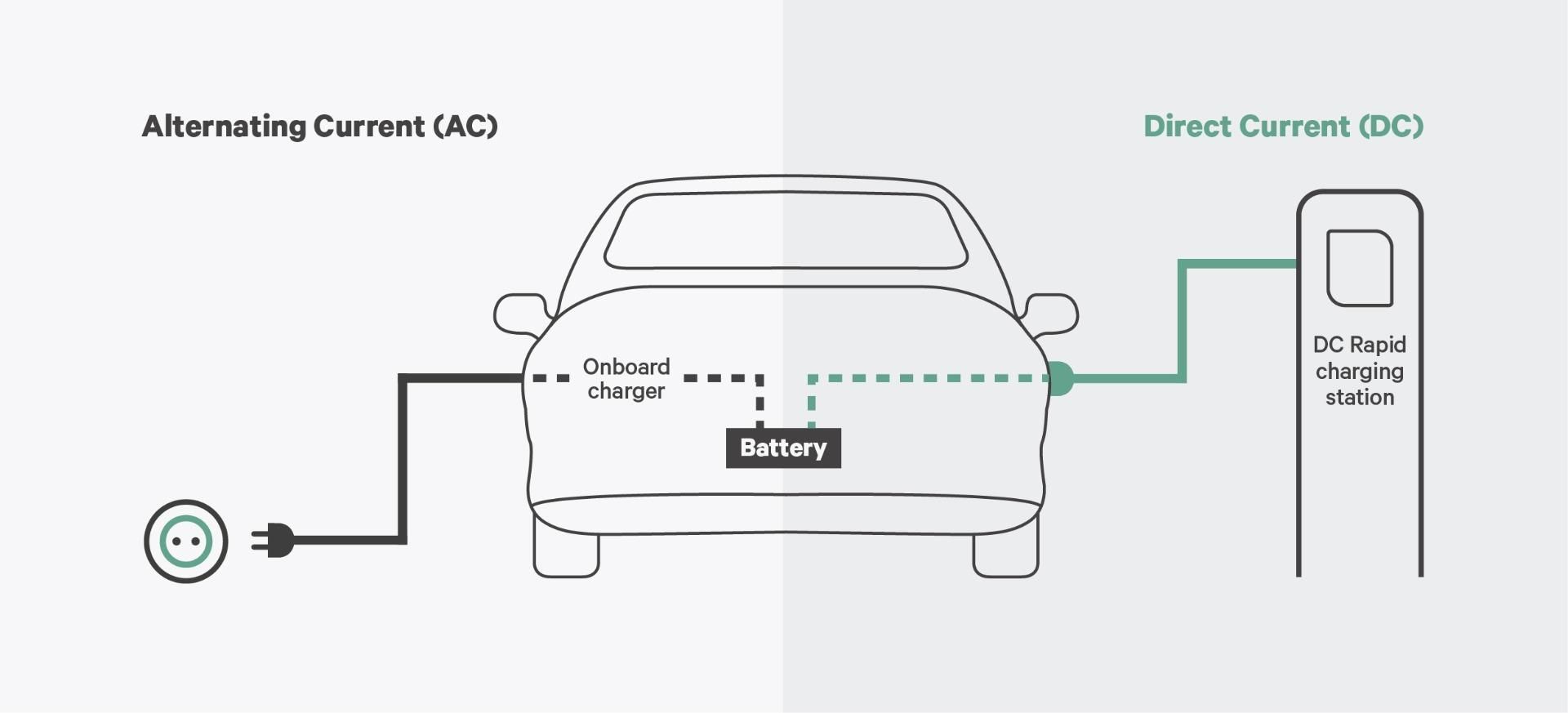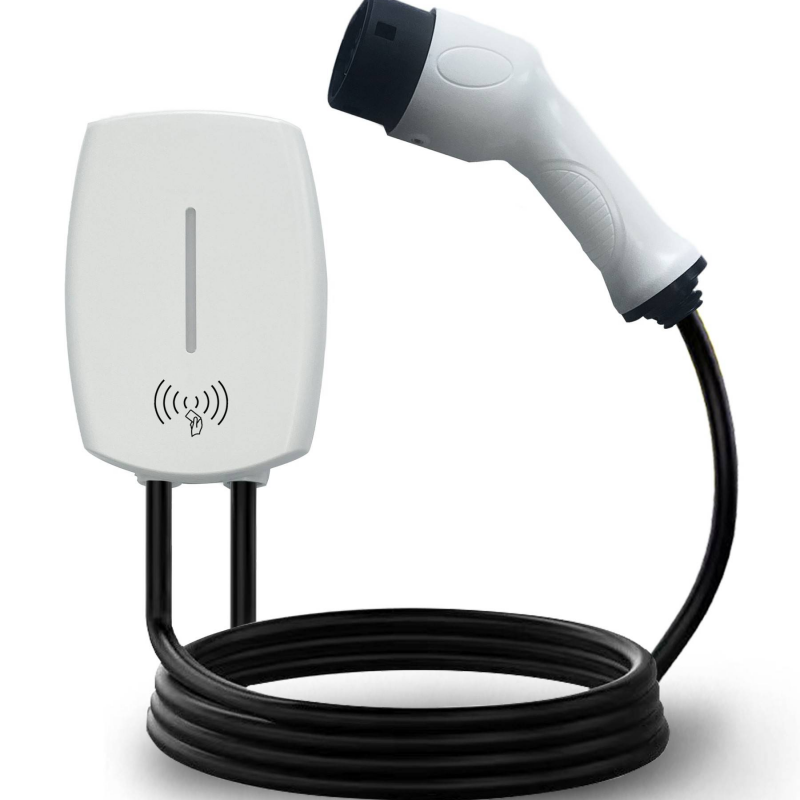What’s the Difference Between AC and DC Charging?
AC charging for electric vehicles
When it comes to electric vehicles, the converter is built inside the car. It’s called the “onboard charger” though it really is a converter. It converts power from AC to DC and then feeds it into the car’s battery. This is the most common charging method for electric vehicles today and most chargers use AC power.
DC charging for electric vehicles
As we’ve learned, power from the grid is always AC. The difference between AC charging and DC charging is the location where the AC power gets converted; inside or outside the car. Unlike AC chargers, a DC charger has the converter inside the charger itself. That means it can feed power directly to the car’s battery and doesn’t need the onboard charger to convert it. DC chargers are bigger, faster, and an exciting breakthrough when it comes to EVs.
Where do I find AC charging? Where DC charging?
Most charging stations that you’ll find today use AC charging. The usual charging speed is 22 kW, depending on the car that you own, as well as the power available to the charging infrastructure. It’s ideal for charging your car at home or work because you’ll need more time to load. DC charging, on the other hand, is more common near highways or at public charging stations, where you don’t have much time to recharge. But DC charging is making its way into home charging, offering new possibilities for customers since it allows not only fast charging but also bidirectional charging.
Nobi AC Smart Charger for home charging, 3.5kW/7kW/11kW/22kW
Post time: Jul-20-2023










